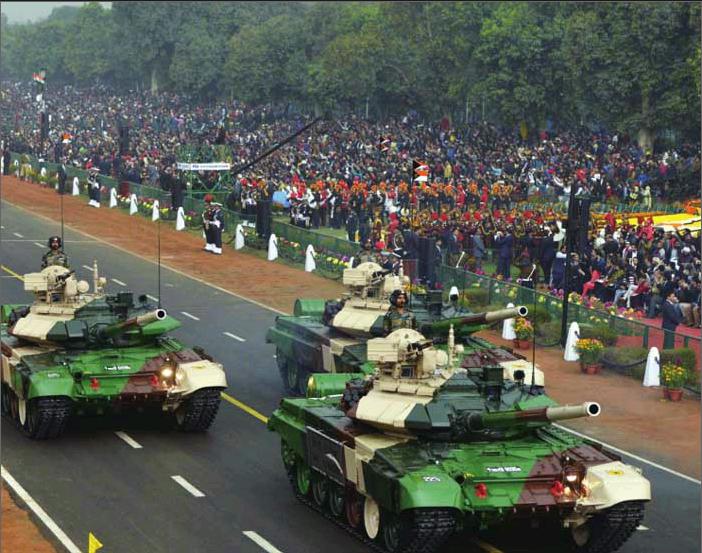A Conflict of No Good
2017-08-10ByAnGang
By+An+Gang

Sino-Indian relations are e xperiencing their most severe standoff since the two nations border war 55 years ago. In late June, Indian troops trespassed into China in the Donglang area at the Sikkim section of the China-India boundary. According to historical documents of the two countries, the Sikkim section of the China-India boundary has been defi ned by treaties, and there is no border dispute between the two countries in the area.
The stalemate
Information from different sources all hints that the immediate cause of Indias move is the pressure New Delhi feels due to Chinas recent infrastructure construction in the border area. At the beginning, the Indian Government claimed that Chinas road-building activity had crossed the Indian border, but later, New Delhi denied its previous statement and claimed its military move was meant to “safeguard Bhutans disputed territory” with China. However, China and Bhutan have no territorial disputes in that area. And reports also disclosed that Bhutan was not even informed before Indias trespass.
According to Chinas Ambassador to India Luo Zhaohui, it is the first time that Indian troops have crossed the mutually recognized boundary and trespassed into Chinas territory, triggering a close-range faceoff between Chinese and Indian border troops.
According to the Convention Between Great Britain and China Relating to Sikkim and Tibet (1890), a boundary agreement accepted by both China and India, Mount Gipmochi, located at southwest Donglang, is the point where the settled borders of China, India and Bhutan meet. But now India is attempting to make the whole Donglang area the junction of the three countries.
To this, Chinese Foreign Ministry spokesperson Geng Shuang responded clearly that“just as its name implies, the tri-junction is a point rather than a line or an area. The 1890 convention clearly stipulates that the Sikkim section of the China-India boundary commences at Mount Gipmochi in the east. The illegal trespass by Indian troops took place at the Sikkim section of the China-India boundary over 2,000 meters away from Mount Gipmochi.”
Chinas Donglang area is perceived to be of strategic importance for India, given its proximity to the narrow Siliguri Corridor, which connects Indias eastern territory with the rest of the country. The increasing impatience of New Delhi, arising from its slow progress in border construction, helped trigger the incursion. India sees Chinas efforts in promoting infrastructure connectivity in the region, including a planned railway from Tibet Autonomous Region to Nepals Katmandu, as a potential threat to its national security: If conflict with China arises, its eastern territory can easily be cut off from the rest of the country.
Since the outbreak of the incident, China urged India to withdraw its troops and the two sides had staged several rounds of negotiations. However, India has showed no intention to withdraw and seems to have prepared for a long standoff. The situation has become worrisome.
Indias misjudgments
The current situation derives from misjudgment by India, its military in particular.
India sees China as a neighbor that has territorial ambitions toward India. The South Asian subcontinent giant might have sought opportunities to revenge the 1962 border war. Such paranoia has led New Delhi to be- lieve that Chinese strategies and initiatives are targeting India, whether it is the Belt and Road Initiative on promoting regional development or Chinese ships sailing through the Indian Ocean. Meanwhile, India was the only large nation in the region that didnt attend the Belt and Road Forum for International Cooperation hosted by China in Beijing in May.
New Delhi has been bound up in great power diplomacy in recent years. Since Narendra Modi took power in 2014, India has been keen on developing security partnerships with the United States, Japan, Australia and ASEAN nations, Viet Nam in particular. It pursues its Indo-Pacific Strategy with the United States, taking sides with Washington in foreign affairs, by which the Indian Government believes it can balance Chinas growing infl uence.
Knowing that the Chinese border troops refrain from “fi ring the fi rst bullet” in any given confl ict, for many years, the Indian troops have continued to furtively nibble away at Chinese territory and strengthen its illegal occupation of disputed land.
Besides, India is also led to believe that China will compromise toward its trespass as the latter is set to host the upcoming BRICS Summit in September and thus cannot afford a large-scale military confrontation. Thus, India has become emboldened to understake such actions. But its provocative and status quo-changing move in the undisputed area will probably force China to readjust its policy.
Testing the patience?
For China, the Donglang incident is one of the rare diplomatic and military challenges it has met in recent years. Such a challenge has strategic implications.
China has a stern resolve in defending its territorial integrity—it neither makes trouble nor is afraid of trouble. China has been committed to developing friendly relations with neighboring countries, but such good faith should not be misinterpreted as weakness or compromise in its ability to effectively safeguard its core interests.
Reckless acts aimed at encroaching on other countries national sovereignty could backfi re. China bears no geostrategic ambitions toward the South Asian subcontinent or Indo-China Peninsula, but it will not hesitate to take measures to safeguard its territory if necessary. In the light of its current national strength, China can now foil any invasion attempts more effectively than it did during the 1962 border war.
The international community has evolved to a point where it operates accord- ing to international law. Nation states are capable of dealing with border disputes on the basis of international law.
China has always been fi rm in its conviction that force may be used only after all peaceful alternatives have been tried and exhausted. In spite of Indias provocation, China will not give up diplomatic efforts to settle the matter.
But fi rst of all, the true purpose of Indias trespass must be explored, whether it is to occupy Chinese territory or compete with China for perceived influence over other regional states such as Nepal and Bhutan. Either way, as China has repeatedly stated, Indias withdrawal of its border troops who have illegally crossed into the Chinese territory is the precondition for any meaningful dialogue between the two sides.
Looking at the bigger picture, as both China and India are large developing nations, strengthening social and economic development to improve their peoples livelihoods should be a more urgent task for the two governments. They should try their best to refrain from allowing the border incident to evolve into a geopolitical contest. Though each side has voices soundly beating the other, their governments should provide rational options. If China and India, the two most promising emerging economies, pour all their resources into a border confl ict, both will lose, leaving the established powers the biggest winners of a China-India confrontation.
Furthermore, while we can choose enemies, we cannot choose our neighbors. Without peaceful border relations, both nations will find it difficult to concentrate on national development. As China and India are both great ancient civilizations of the world, it is hoped that they can draw wisdom from history and fi nd the path to peace.
